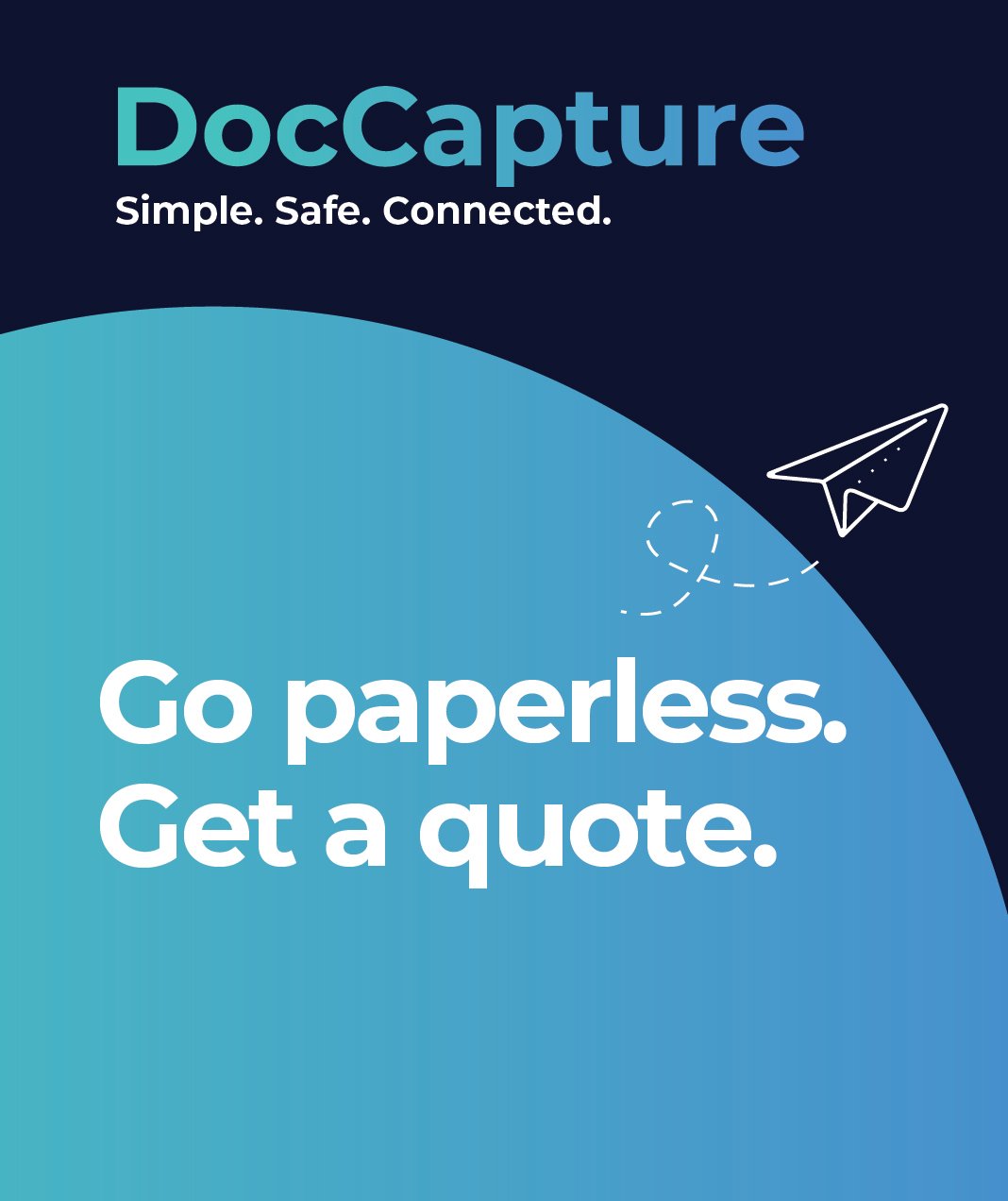Navigating GDPR & HIPAA: The Role of Digital Document Management in HR
Table of contents
HR teams face growing pressure to manage employee data securely while staying compliant with strict regulations like GDPR and HIPAA. A single oversight—whether it's a lost document or unauthorized access—can lead to hefty fines, legal trouble, and reputational damage.
Both regulations demand airtight data security, proper access controls, and reliable record-keeping. But with paper-based processes, meeting these requirements becomes nearly impossible. Document scanning offers a straightforward way to digitize, organize, and secure HR records, ensuring compliance without the headaches of manual record management.
Let's break down what GDPR and HIPAA require from HR teams, the challenges they face, and how document scanning makes compliance easier.
Understanding GDPR & HIPAA in HR
HR departments handle a massive amount of sensitive employee data, from personal identification details to health records. Two major regulations—GDPR (General Data Protection Regulation) and HIPAA (Health Insurance Portability and Accountability Act)—set strict rules on how this data must be stored, accessed, and protected.
What GDPR Requires from HR
GDPR applies to any company processing personal data of individuals in the EU, even if the business is based elsewhere. For HR teams, this means:
- Employee Data Protection: Personal data must be secured against breaches.
- Consent & Purpose Limitation: Employees must be informed about how their data is used, and it can only be collected for specific, legitimate purposes.
- Right to Access & Erasure: Employees have the right to request their data or ask for its deletion if no longer needed.
Read more: 2023 Guide to HR Document Retention Requirements
What HIPAA Requires from HR
HIPAA applies to organizations handling employee health information, particularly in the U.S. HR teams must:
- Protect Employee Health Records: Any medical information collected (e.g., insurance details, medical leave records) must be safeguarded.
- Limit Access to Data: Only authorized personnel should access sensitive health records.
- Ensure Secure Storage & Transmission: Electronic health records must be encrypted and backed up securely.
The Compliance Challenges HR Teams Face
Staying compliant with GDPR and HIPAA isn’t as simple as locking files in a cabinet or setting up basic password protection. HR teams deal with complex challenges that make regulatory adherence difficult, especially when handling large volumes of sensitive employee data.
Managing Large Volumes of Employee Records
HR departments store employment contracts, performance reviews, payroll data, and benefits documentation—much of it containing personal and financial details. Without a structured digital system, keeping track of retention periods and disposal timelines becomes a logistical nightmare.
Learn more: HR Document Scanning
Ensuring Data Security in a Digital-First Environment
With remote work and cloud-based HR systems, sensitive data is more vulnerable to breaches. Unauthorized access, phishing attacks, and accidental data leaks can expose employee information, leading to non-compliance and legal trouble.
Keeping Up with Regulatory Updates
GDPR and HIPAA regulations aren’t static—they evolve with new privacy concerns and technological advancements. HR teams must regularly update policies and systems to align with the latest compliance requirements, which can be overwhelming without the right tools.
Integration with Existing HR Systems
Many HR teams use multiple platforms for payroll, benefits, and employee records. If these systems don’t integrate seamlessly, data silos form, increasing the risk of duplicate records, outdated information, and compliance blind spots.
These challenges highlight why manual and paper-based processes can no longer support compliance efforts. The next section will explore how document scanning directly addresses these issues.
How Document Scanning Solves These Compliance Issues
Switching to digital record management through document scanning helps HR teams stay on top of GDPR and HIPAA requirements while improving efficiency. By converting paper records into secure digital files, companies can reduce compliance risks, cut costs, and streamline access to critical employee data.
Data Security & Access Control
A scanned document isn’t just a digital version of a paper file—it can be encrypted, restricted to authorized users, and tracked for security purposes. Document scanning solutions offer:
- Role-based access control to ensure only approved personnel can view sensitive HR records.
- Encryption to protect scanned documents from unauthorized access or cyber threats.
- Secure cloud storage to eliminate risks associated with physical files, such as loss or damage.
Audit Trails & Tracking
Regulatory compliance requires clear documentation of who accessed or modified employee records. A digital document management system automatically logs:
- Who viewed or edited a file.
- When changes were made.
- What actions were taken (e.g., updates, deletions, approvals).
This level of tracking provides proof of compliance in case of audits, reducing the risk of penalties.
Automated Retention & Disposal
HR teams must follow strict document retention policies. GDPR requires personal data to be kept only as long as necessary, while HIPAA mandates specific retention periods for health records. A document scanning solution helps by:
- Setting automated retention schedules based on compliance requirements.
- Sending alerts when a document is due for deletion.
- Ensuring secure disposal of outdated files to prevent unauthorized access.
Related Resource: Digital Transformation in HR
Cost Reduction & Efficiency Gains
Beyond compliance, document scanning cuts unnecessary expenses:
- Reduces physical storage costs by eliminating filing cabinets and offsite storage fees.
- Minimizes manual errors that can occur with paper-based processes.
- Speeds up document retrieval, saving HR teams time on audits and reporting.
With these benefits, HR teams can shift their focus from paperwork to strategic initiatives that improve employee experience and operational efficiency.
Key Features to Look for in a Document Scanning Solution
Not all document scanning solutions are built the same. HR teams need a system that goes beyond basic scanning and ensures GDPR and HIPAA compliance. Here are the most critical features to look for when choosing the right solution.
Encryption & Secure Access Controls
HR records contain sensitive personal and health information, making security a top priority. A compliant document scanning solution should offer:
- End-to-end encryption to protect files from unauthorized access.
- Multi-factor authentication (MFA) to prevent unauthorized logins.
- Role-based permissions so only approved personnel can view or edit certain documents.
Integration with HR Platforms
A good scanning solution should work seamlessly with existing HR systems like:
- HRIS (Human Resource Information Systems) for centralized employee data management.
- Payroll & benefits platforms to ensure compliance with financial and healthcare regulations.
- Electronic medical record (EMR) systems for handling HIPAA-protected health records.
Read more: Scanning HR Documents
Automated Classification & Indexing
HR teams manage thousands of documents, from contracts to performance reviews. A scanning solution with automated classification can:
- Sort and tag documents based on content, making retrieval fast and efficient.
- Enable full-text search so HR professionals can quickly find records without manually browsing folders.
- Apply retention policies to ensure compliance with GDPR and HIPAA guidelines.
Compliance Reporting & Audit Capabilities
To prove compliance, HR teams need clear documentation of data access, modifications, and retention. A scanning solution should provide:
- Detailed audit trails that track who accessed, edited, or deleted documents.
- Automated compliance reports to simplify audits and regulatory checks.
- Custom alerts for upcoming document disposal deadlines.
These features make compliance manageable while improving overall HR efficiency.
Conclusion
HR compliance with GDPR and HIPAA isn’t optional—it’s a legal necessity. Managing employee records manually increases the risk of data breaches, fines, and operational inefficiencies. Document scanning simplifies compliance by securing sensitive information, automating retention policies, and integrating with existing HR systems.
By digitizing HR records, companies can:
✔️ Prevent unauthorized access with encryption and access controls.
✔️ Maintain compliance with automated audit trails and retention policies.
✔️ Reduce costs and errors by eliminating paper-based inefficiencies.
Don't leave compliance to chance. Ensure your HR department stays secure and compliant with a document scanning solution designed for regulatory adherence.
Fill out our "Get a Quote" form today to learn how DocCapture can help streamline your HR document management.
Share this
You May Also Like
These Related Stories

Navigating GDPR and HIPAA: The Role of Digital Document Management

The Impact of Digital Records on HR Data Security and Privacy

